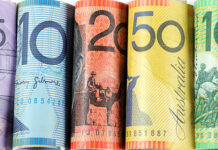Retail sales rose modestly in June, up 1.1% from a month ago. This is well above Statistics Canada’s preliminary estimate for a 0.3% gain. However, growth was considerably softer in inflation-adjusted terms, with the monthly volume of sales up just 0.2%.
Statistics Canada’s flash estimate for July points to a 2.0% decline.
The headline in June was boosted by higher sales at gasoline stations and motor vehicle and parts dealers. Receipts at gasoline stations were up 3.9% m/m on the back another leg up in gas prices. Adjusted for the price effect, gasoline satiations’ sales actually fell by 1.3% in volume terms – the second consecutive monthly drop. Sales at motor vehicle and parts dealers were up 1.8% on the month.
Core sales, which exclude autos and gasoline, edged up just (+0.2% m/m). This is the smallest increase since the start of the year. Core sales were flat in inflation-adjusted terms.
- Sales rose at general merchandise stores (+1.1%), health & personal care stores (+1.0%), and clothing & accessories stores (+1.8%). Sales were also higher at miscellaneous store retailers (+1.8%), following a steep decline in the month prior.
- However, sale pulled back at electronics and appliance stores (-2.4%) and were flat at the building material and garden equipment dealers. Sales were also lower at food and beverage stores (-1.1%), reversing the increase in the prior month, and sporting goods, hobby and book stores (-0.8%).
- E-commerce sales rose by 4.5% in June– a forth consecutive monthly increase – as consumers looked for better deals online amid rising prices.
Key Implications
The headline growth for retail sales surprised to the upside in June, however, looking under the hood reveals that much of the gain was due to higher prices. Adjusting for inflation, total sales were up just 0.2% on the month while core sales were flat. With inflation running at a multi-decade high, higher prices have been giving a lift to nominal retail sales figures, but inflation-adjusted numbers tell a different story. Sales at gas stations are a prime example. While in dollar terms gasoline sales were up in both June and July, in volume terms sales declined in both of these months, as Canadians cut back on driving to mitigate some of the impact of sky-high prices at the pump.
As we noted in today’s report, consumer spending on goods and services appears to have eased in July after strong gains during the initial reopening months. While some of the moderation is to be expected after strong gains during the initial reopening months, higher prices are also weighing on consumers’ purchasing power. There is still appetite among consumers for experiences like dining-out, but it is only a matter of time before pent-up demand gets satiated and intensified financial headwinds – red-hot inflation, higher interest rates and an erosion of household wealth – prompt consumers to tighten their purse stings, particularly when it comes to discretionary items.
Fortunately, gasoline prices eased in July, which should give consumers some reprieve. They are going to need those savings given that price growth continued to accelerate for many other key items, such as food. With the inflation genie still out of the bottle, the Bank of Canada is expected to take rates higher again at its next meeting in less than three weeks.












